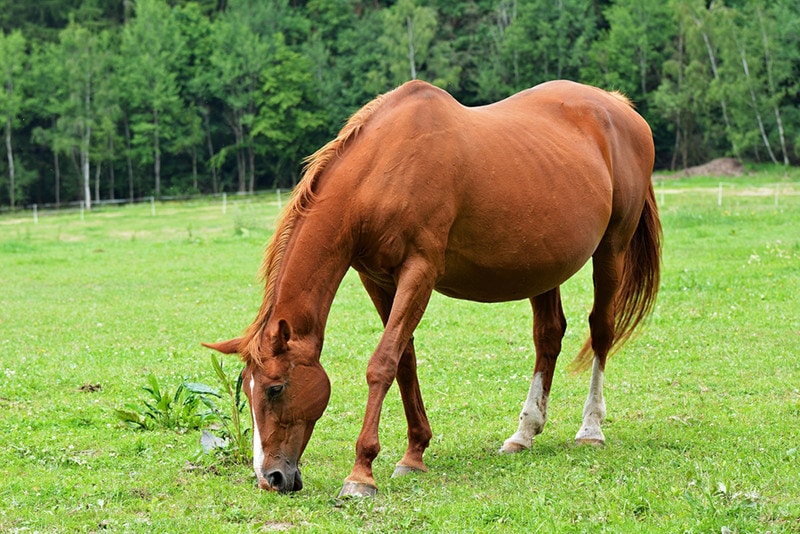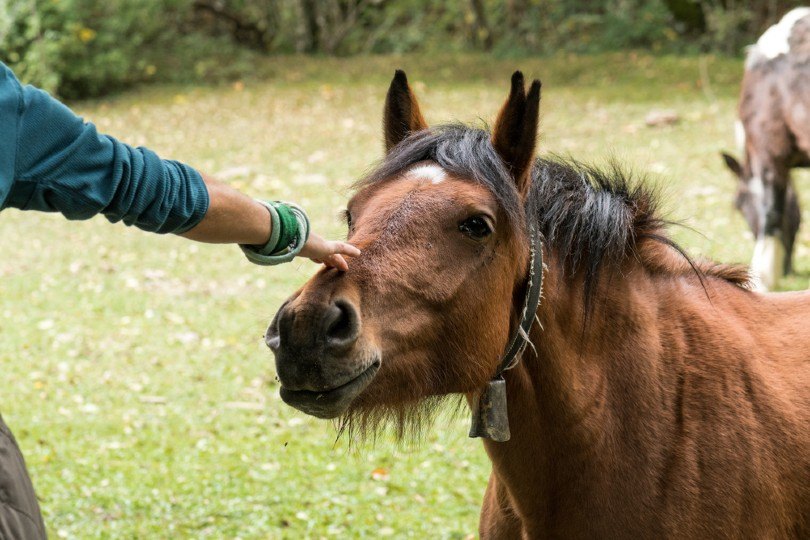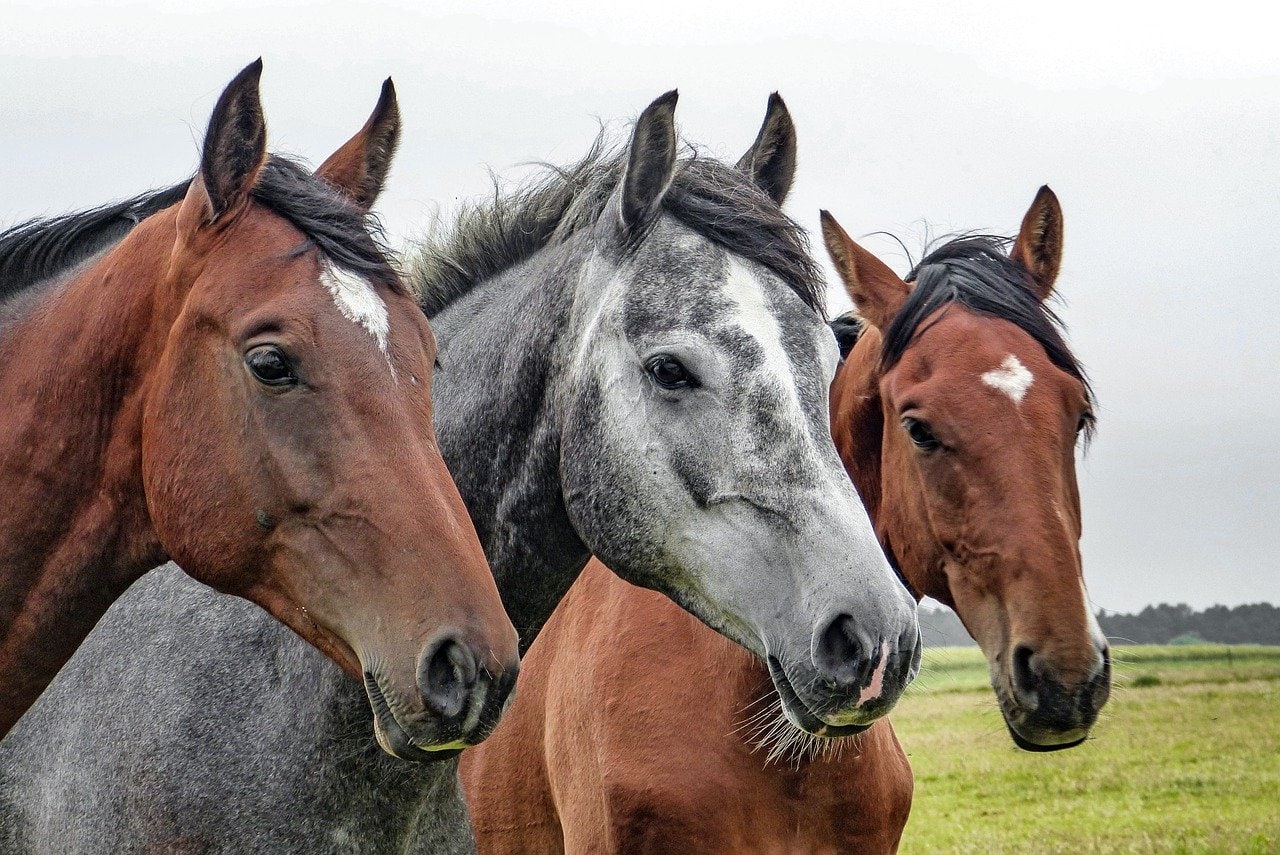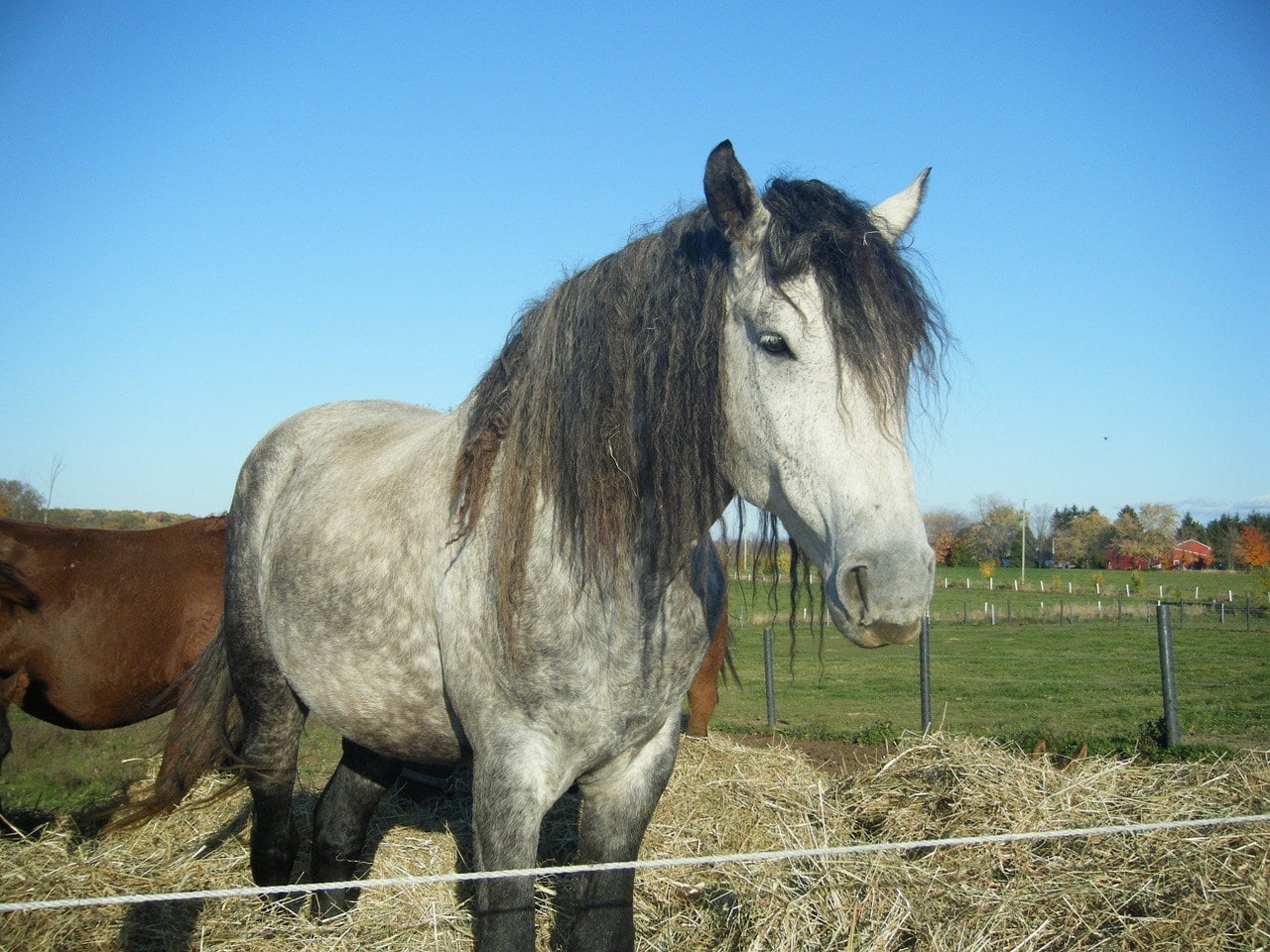
A study published in 2021 concluded that the modern domesticated horse most likely originated in what is now Southern Russia.1 While the original horse may come from Russia, humans developed the species into hundreds of breeds over several thousand years. With native breeds in so many countries, some still claim Russia as their homeland. Here are 10 Russian horse breeds you should get to know.
The 10 Russian Horse Breeds
1. Russian Don
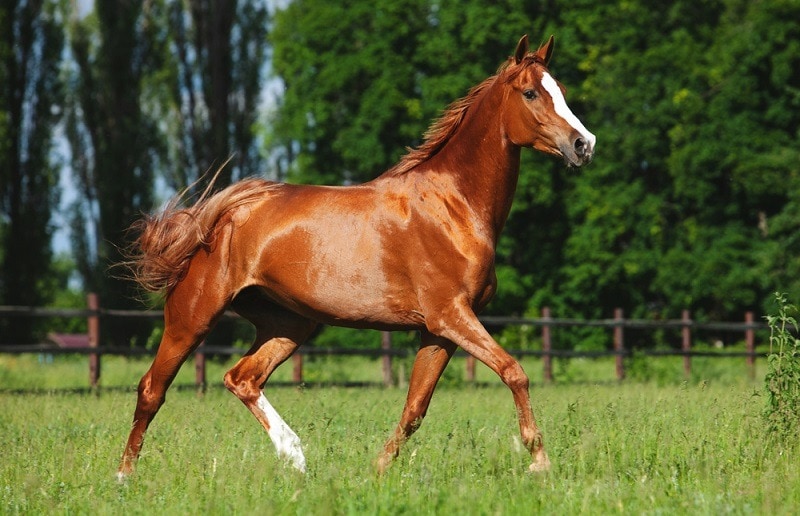
| Time of origin: | 17th century |
| Height: | 15.2–16.2 hands |
| Coat colors: | Chestnut, bay |
The Russian Don is one of the oldest breeds of riding horses found in the country. The Cossacks developed the sturdy, even-tempered horses. Russian Dons were the preferred military riding horse for centuries.
World War I and the Russian Revolution almost wiped out this breed, but the Russian government started a breeding program to restore it in the mid-20th century. The Russian Don is a strong, elegant horse, often found with a gold shine to their coat. They are primarily used for recreational riding and equine sports today.
2. Akhal-Teke
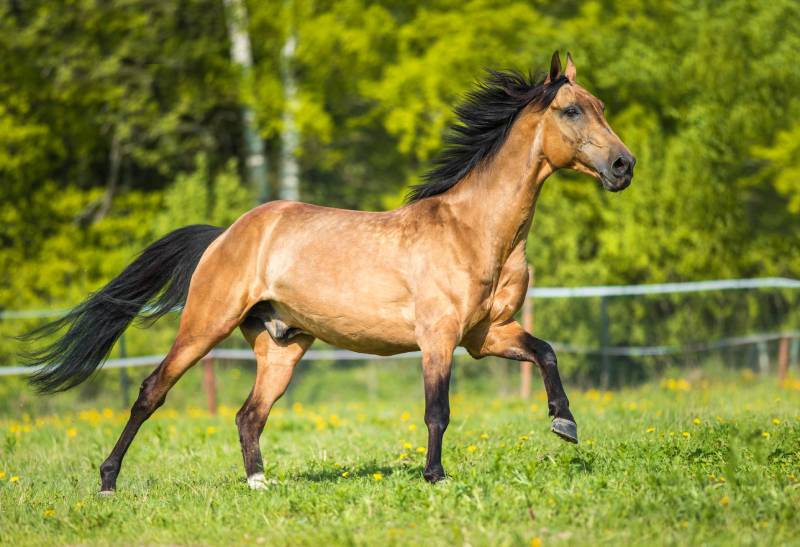
| Time of origin: | 8th century B.C. |
| Height: | 14–16 hands |
| Coat colors: | Chestnut, bay, black, dun, gray, palomino |
The Akhal-Teke is one of the oldest purebred horses in the world. It traces its ancestry as far back as the 8th century, with skeletons dating back to 2400 B.C. discovered in Turkmenistan. Characterized by their long, thin heads and the metallic sheen to their coats, the Akhal-Teke has a long history as a Russian military horse.
The breed nearly went extinct due to internal conflicts in Russia and the rise of the Soviet Union. They have only recently become well-known outside of Russia. The Akhal-Teke is one of the best endurance breeds in the world. They are also used for eventing and dressage.
3. Orlov Trotter
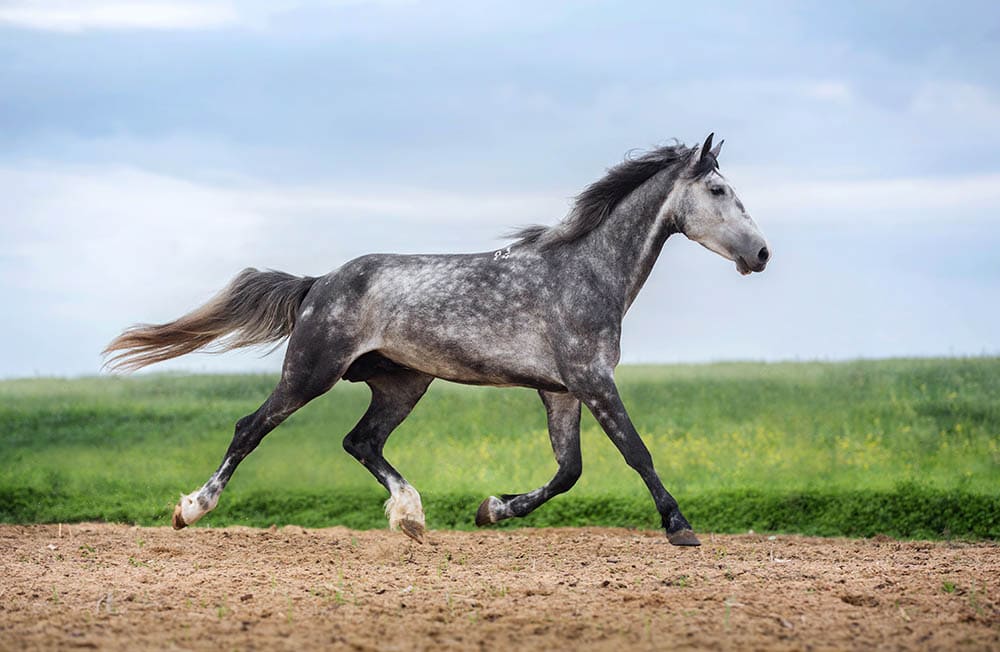
| Time of origin: | Late 18th century |
| Height: | 15.2–16 hands |
| Coat colors: | Gray, black, bay |
Perhaps Russia’s most famous native breed, the Orlov Trotter, was developed by Count Orlov in the late 18th century. The Count saw a need for a harness horse with the endurance to travel long distances and the hardiness to handle Russia’s harsh climate. He also wanted a horse beautiful enough to be desirable to Russian nobility.
The Orlov Trotter was the result of years of dedicated breeding. It was once the fastest trotting horse in the world but has since been eclipsed by newer breeds, such as the Standardbred. Although they were almost exclusively used for harness racing, the Orlov Trotter is not as common now.
4. Budenny

| Time of origin: | 1948 |
| Height: | 15.1–16 hands |
| Coat colors: | Chestnut, bay, gray, brown, black |
The Budenny, also called the Budonny, is closely related to the Russian Don. Like that breed, the Budenny was developed as a military riding horse. It was recognized as its own breed and separated from the Don in 1948.
Unfortunately, the Russian cavalry disbanded several years later. However, the Budenny is an athletic, good-tempered, easily trained horse. They are good jumpers and can be used for riding. The Budenny makes a wonderful competition horse for equine sports.
5. Russian Heavy Draft

| Time of origin: | Mid-19th century |
| Height: | 14.1–15 hands |
| Coat colors: | Chestnut, bay, brown |
The Russian Heavy Draft horse was bred to serve as a strong, fast, working horse that was cheap enough for the average farmer to afford to feed. Like many Russian breeds, they nearly went extinct during World War I and the Russian Civil War that followed.
By 1937, the breed had been saved and soon became widespread throughout Russia and the countries that would become the Soviet Union. Russian Heavy Draft horses are short, strong, and excellent pullers.
6. Russian Trotter

| Time of origin: | Late 19th century |
| Height: | 15–16 hands |
| Coat colors: | Chestnut, bay, black, gray |
The Russian Trotter is one of the newest breeds native to Russia. It was developed in the late 19th century by crossing the Orlov Trotter with Standardbreds imported from America. The result is an extremely fast harness horse common across Russia and nearby countries.
However, the overall quality of this trotter is lower than the Orlov Trotter. No more Standardbred horses were imported after World War I and the Russian Civil War. To continue the development of the Russian Trotter, some inbreeding was necessary, which produced some less healthy specimens prone to conformation problems. Although importing horses is now allowed, the quality has remained the same.
7. Bashkir

| Time of origin: | 19th century |
| Height: | 14 hands |
| Coat colors: | Chestnut, bay, roan, gray |
The Bashkir is a rare, working breed with murky origins. It was recognized as a distinct breed in the 19th century but almost certainly existed before that time. Used as a draft horse and a source of milk and meat, the Bashkir breed is still being refined by crossing with other native Russian horses, such as the Russian Heavy Draft.
The Bashkir has a large head, short neck, and thick mane and tail. They are very hardy horses and can live in outdoor herds even in the Russian winters.
8. Yakut

| Time of origin: | 13th century |
| Height: | 13–13.1 hands |
| Coat colors: | Bay, gray, roan |
The Yakut is an unusual breed that developed with little interference from humans. In 13th-century Siberia, the Yakut people brought horses when they migrated to the area. They were kept exclusively outdoors, where they adapted to the harsh climate of Siberia and became the Yakut breed.
Three distinct types of Yakut were developed in more recent years by crossbreeding with other native Russian breeds. The Yakut is mainly used for meat and milk but sometimes as a riding horse. They have thick hair and frequently feature dark stripes on their forelegs and down the back.
9. Tersk

| Time of origin: | 1920s–1940s |
| Height: | 14.3–15 hands |
| Coat colors: | Bay, gray, golden chestnut |
The Tersk was developed in the early 20th century and is closely related to the Arabian. They have small heads, long necks, and an athletic build. Like the Arabian, Tersks are fantastic endurance horses. They are also healthy and live a long time.
Along with their use in endurance competitions, Tersks are used to improve other native Russian breeds. They are also among the few Russian breeds regularly exported to other countries.
10. Vyatka

| Time of origin: | 14th–18th century |
| Height: | 13.3 hands |
| Coat colors: | Dun, roan, bay, brown, chestnut, black |
The Vyatka likely developed from other native horses beginning in the 14th century, but the breed’s exact origins are unclear. In the early 19th century, it was one of Russia’s most popular pulling ponies.
They’re small but strong and fast, and the Vyatka is endangered due to a decline in demand for working horses after industrialization. There is no official breeding operation for the Vyatka, and only a few thousand still exist. The Vyatka generally features a black stripe on the back and across the shoulders and zebra striping on the forelegs.
Final Thoughts
While few of these 10 Russian horse breeds are well-known outside of the country, most have existed for hundreds, if not thousands, of years. Like many domesticated animals, their history is intertwined with the humans they lived and worked alongside.
Learning more about these horses allows us to gain knowledge of the history and culture of their country of origin. Plus, equine sports competitors will find a lot of potential in some of these athletic breeds!
Featured Image Credit: Gigi123, Pixabay


